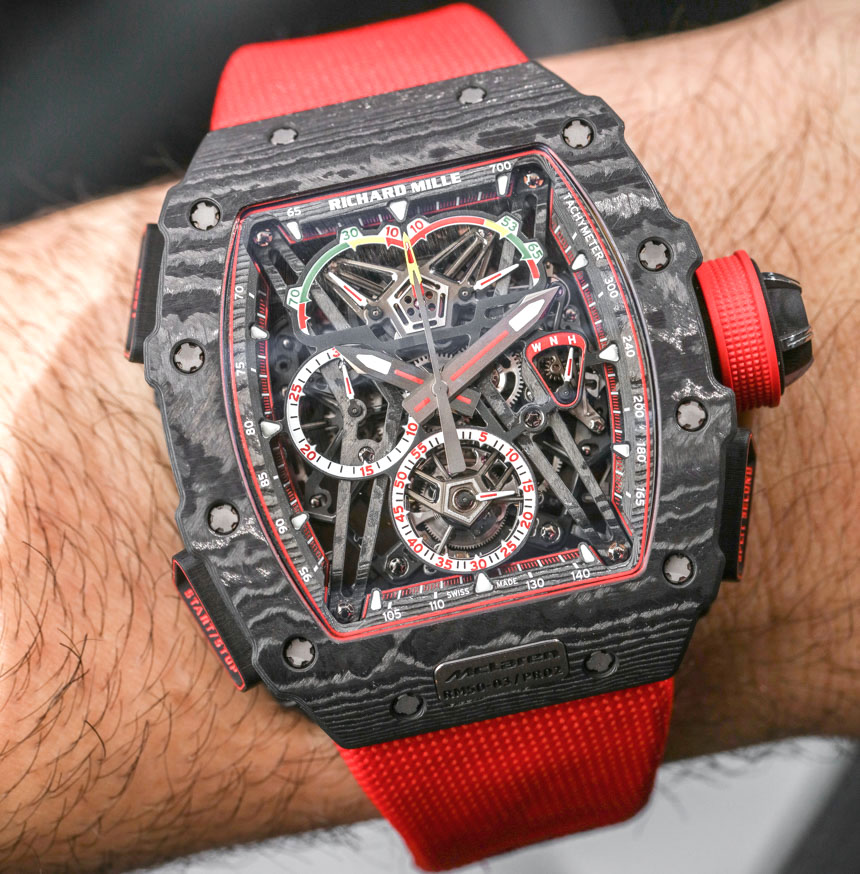
Forty grams. That’s the total weight, including the strap, of the new Richard Mille RM 50-03 McLaren F1 watch, making it the lightest split-second chronograph with a tourbillon the world has ever seen. Ok, yes – this isn’t exactly an ultra-competitive category – hell, the RM 50-03 is a veritable boat-anchor when compared to the groundbreaking 19-gram RM 027 Tourbillon Richard Mille built for Rafael Nadal, but that was, by comparison, a much less complicated watch. A mere 40 grams is still an impressive technical feat when you look at just how much is packed into the latest marvel from Richard Mille. The cost for the 40-gram horological wonder? It’ll be seven figures.
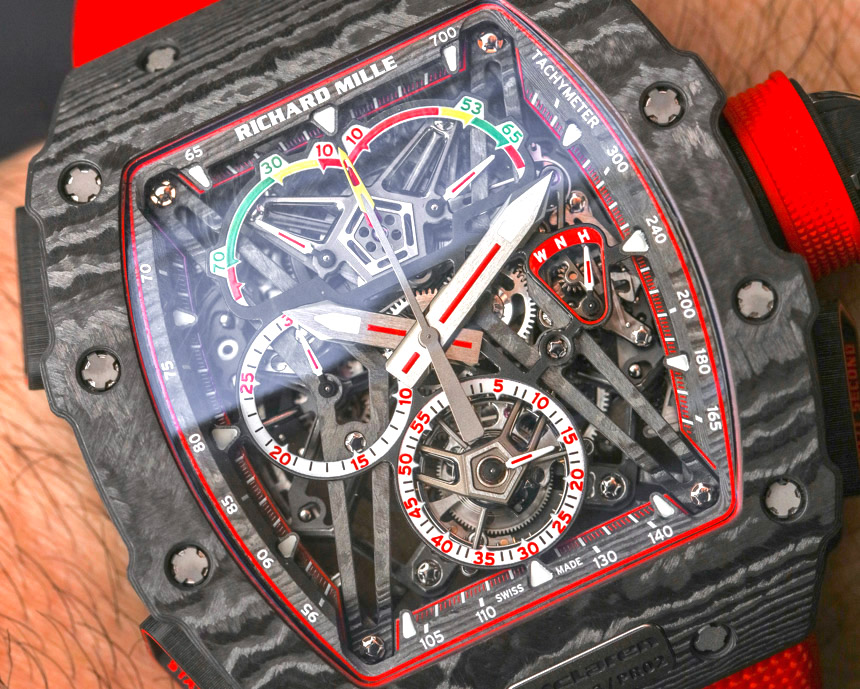
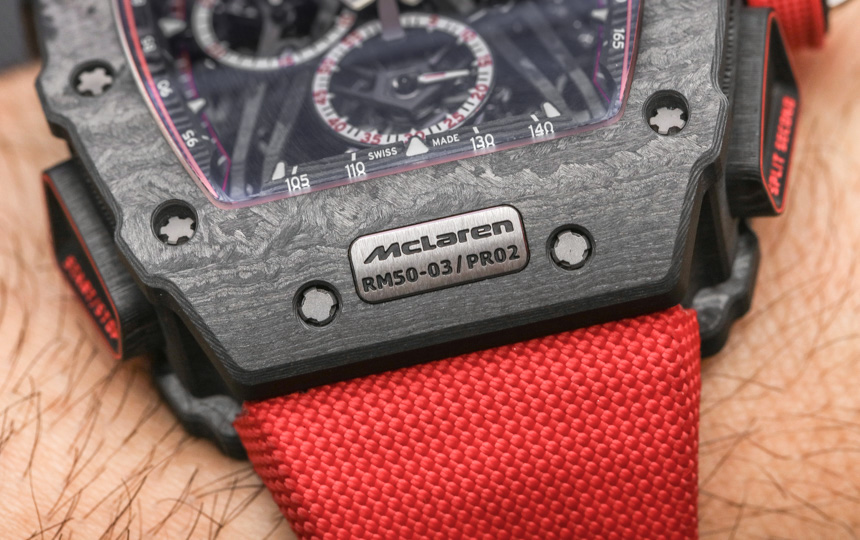
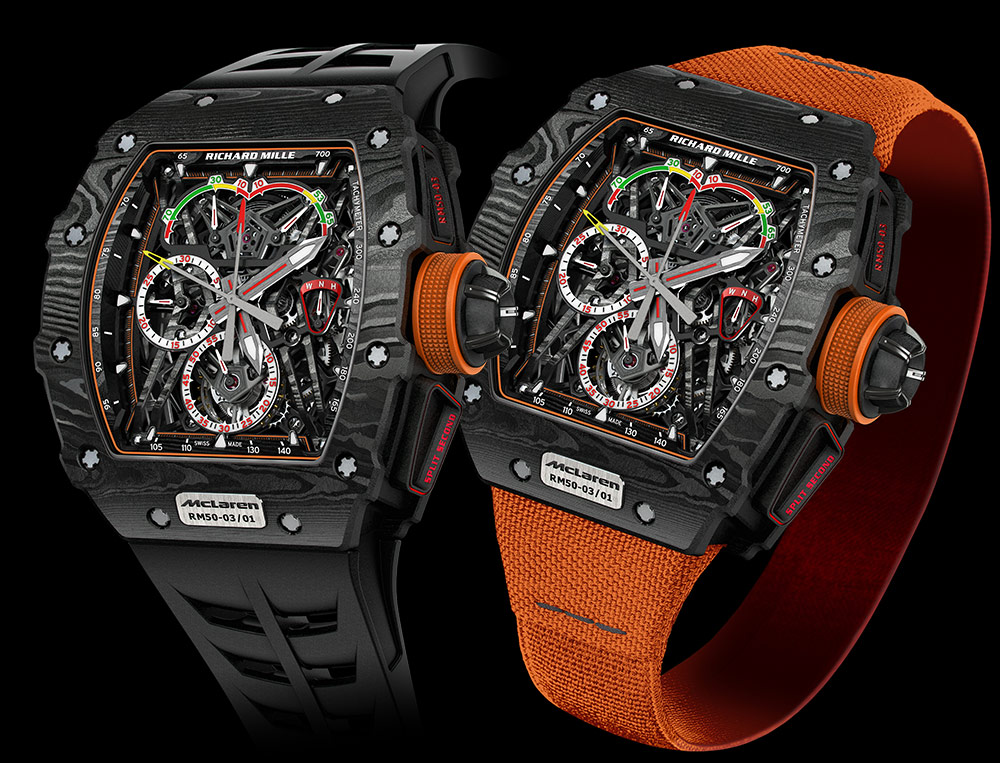
UPDATE 2016/2/10: The production model of the Richard Mille RM 50-03 McLaren F1 will include an orange strap, crown rubber and rehaut as seen here – differing from the prototypes we saw and photographed at SIHH 2017.
Richard Mille is no slouch when it comes to passionately creative design and materials (possible understatement of the year, though the year is still young). However, in breaking new ground for this particular watch, it took a partnership between the Swiss watchmaker, famed British Formula 1 automaker McLaren, and Nobel Prize-winning scientists from the University of Manchester. The product of their collaboration is a case that marries titanium, carbon TPT (thin-ply technology), and a Richard Mille exclusive and apparent watchmaking first: Graph TPT, better known as graphene, that is six times lighter than steel and 200 times as strong. It’s on the cutting edge of materials research and sets the bar for lightweight strength in timepieces.
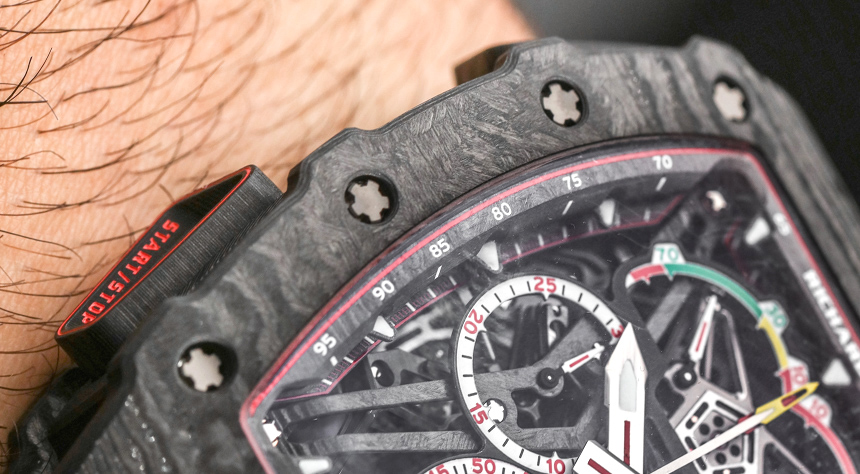
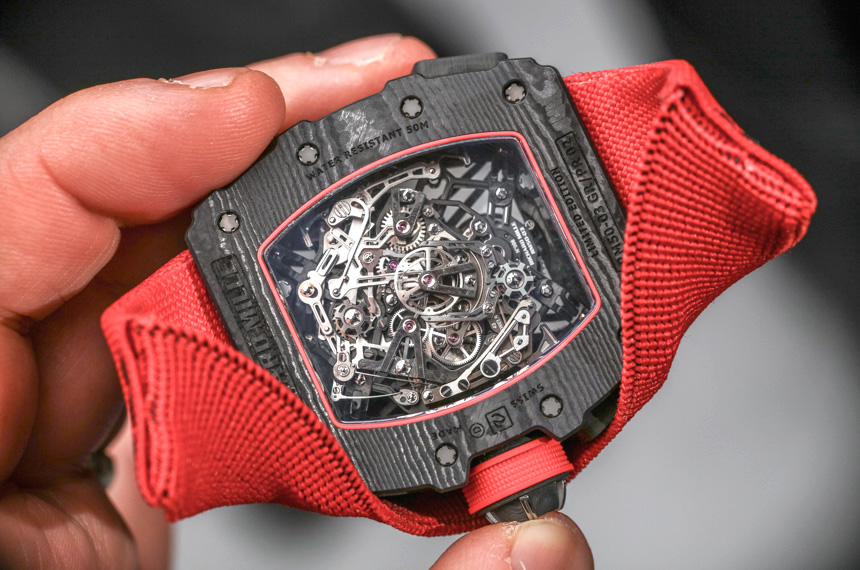
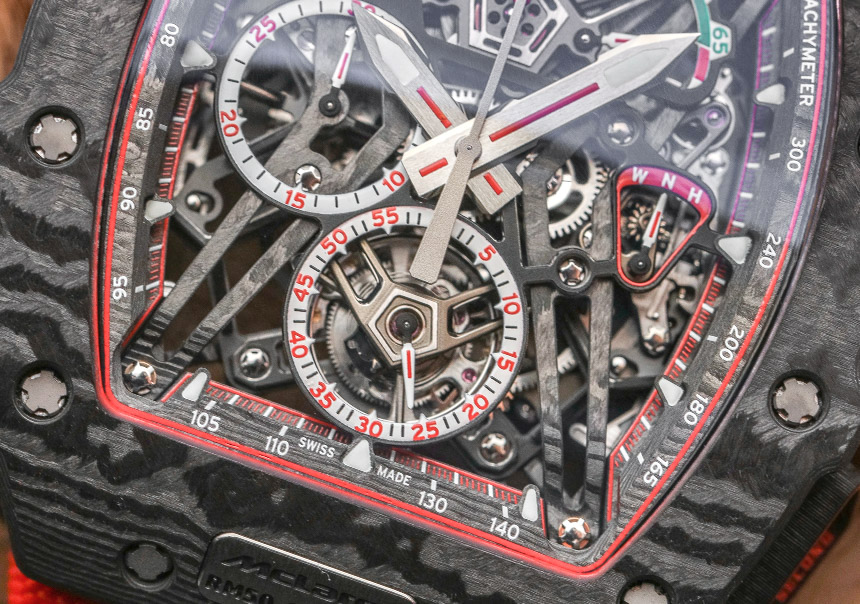
The Richard Mille RM 50-03 McLaren F1 watch is the first completed collaboration between Richard Mille and McLaren in what should be a 10-year deal, as we reported a year ago. It’s a partnership that, quite frankly, makes a lot of sense – not only is founder Richard Mille a true petrolhead and F1 racing fan, both brands are on the cutting edge of development and design to push the limits of what is possible in their respective fields. And speaking of pushing limits, the Richard Mille RM 50-03 McLaren F1 really does exactly that – it’s obviously not a watch for everyone, as its wild design and eye-watering price point immediately confirm. But for those who appreciate the crazy amounts of R&D that go into every Richard Mille, there’s a whole hell of a lot to like here – starting with the construction of the watch’s unique three-part case.
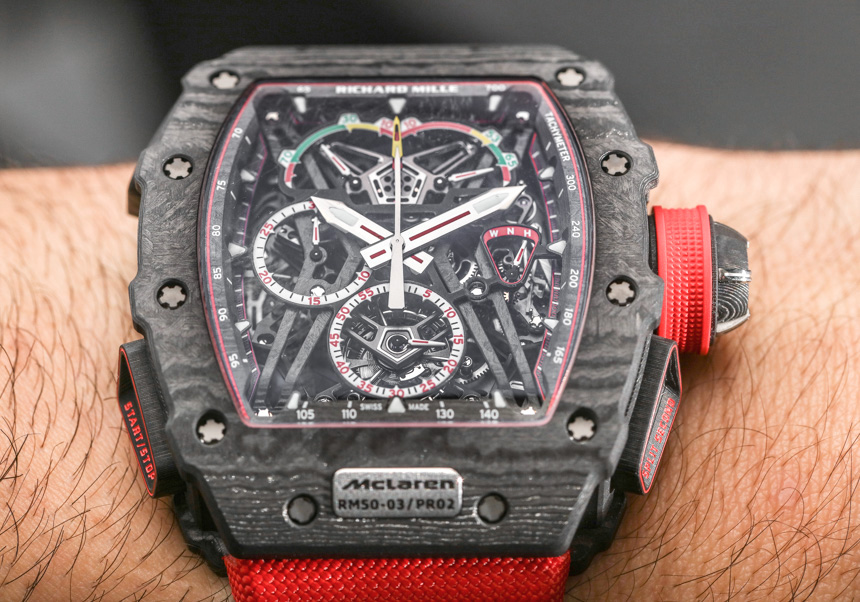
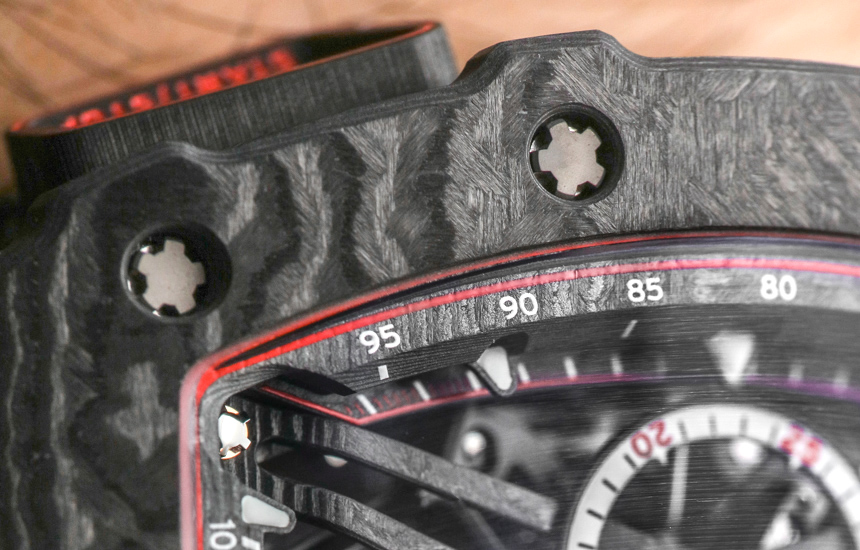
Now, we’ve already seen some pretty ultralight cases come out of the RM workshop – it’s sort of a hallmark of the brand, after all, and this collaborative effort is no different. As mentioned, the classic tonneau-shaped case incorporates a trio of material technologies, including the grade 5 titanium, along with subtly textured carbon TPT, whose wavy “grains” are now a regular fixture on the Richard Mille workbench. However, with the Richard Mille RM 50-03 McLaren F1, the McLaren partnership paved the way for the addition of graphene to the equation – herein, the visibly undulating strata of the carbon bezel and caseback are actually comprised of 600 parallel layers (at a thickness of 30 microns) which have been reinforced with a graphene injection – a revolutionary nanomaterial that, as previously mentioned, is far lighter and more resilient than steel.
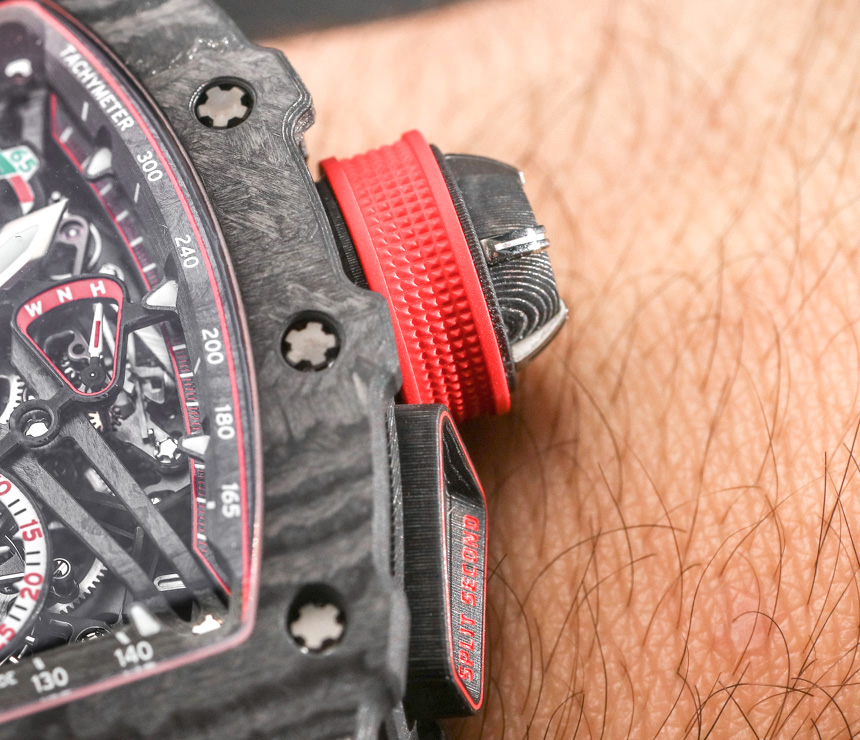
Naturally, the endless possibilities in F1 for a composite that’s lighter and stronger than steel or carbon fiber has led McLaren to become an industry leader in graphene’s research and industrial application, making this partnership with Richard Mille an extremely fortuitous one for the Swiss watchmaker.
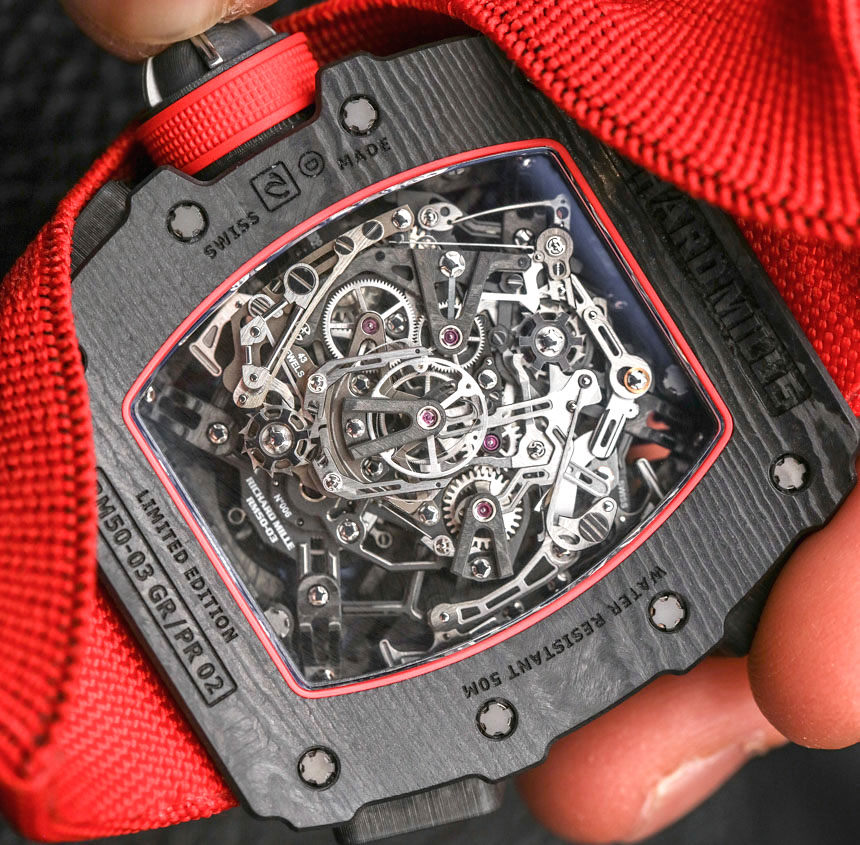
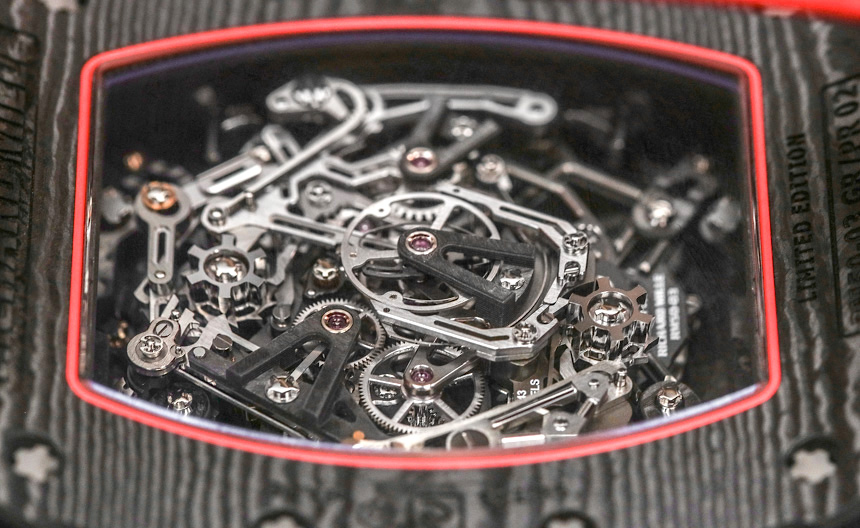
However, the real secret to the watch’s crazy light weight relative to its level of complication lies in the movement, which weighs a scant 7 grams while housing a split-second chronograph, tourbillon, as well as power reserve and torque sensors (at 12:00 on the dial). This was accomplished through the skeletonization of critical movement pieces, along with the deployment of grade 5 titanium and TPT Carbon for the heavier baseplate and movement bridges. Furthermore, the transverse cage that supports the entire caliber is attached to the caseband and constructed from the same TPT Carbon as the case – an element directly inspired by the suspension structure of a McLaren-Honda F1 car at the root of the partnership. This unique design enables the movement to withstand the significant amounts of g-force that one might experience accelerating or decelerating in the hypothetical cockpit of a McLaren-Honda.
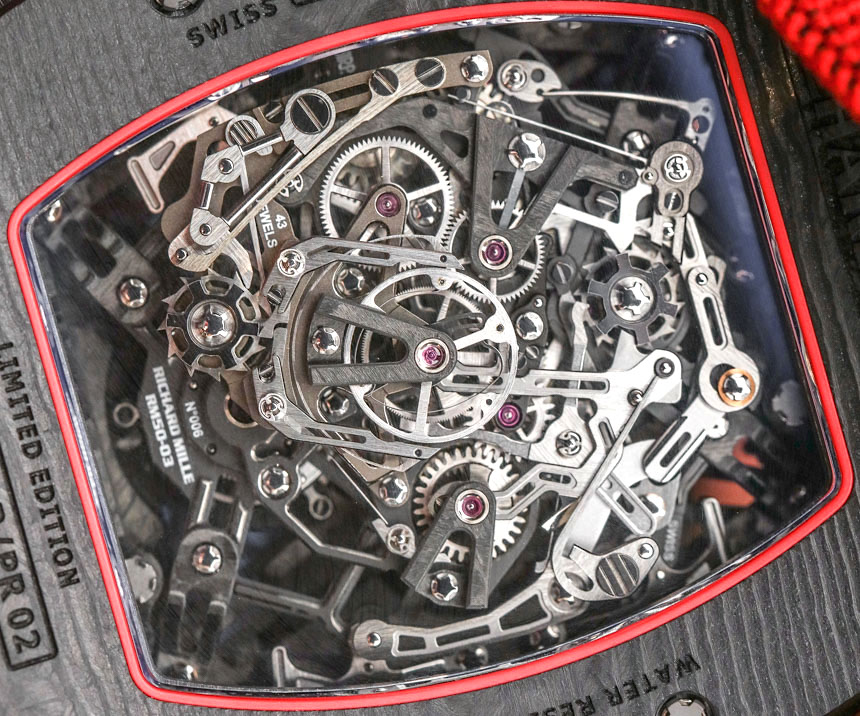
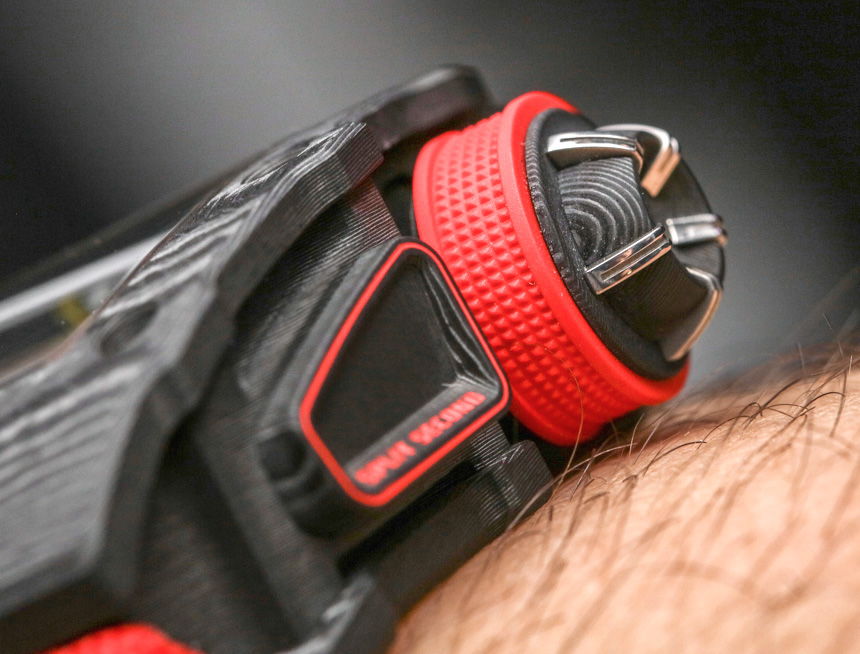
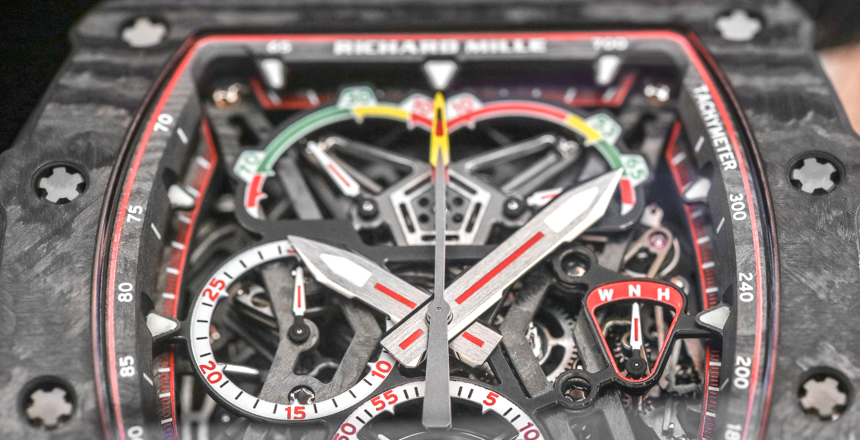
The RM50-03 Calibre has a 70-hour power reserve which can be monitored by the indicator at 11 o’clock. It operates at 21,600vph, contains 43 jewels, and boasts a new split-seconds system which includes a new column wheel operating the different levels of the split-seconds function. The new column wheel takes the number of columns from 8 to 6, which now optimize function and durability. There is also a new clamp design and the replacement of the helical wheel with a blade on the split-seconds wheel. The result of all this for non-movement experts is a simultaneous reduction of friction and a halving of energy consumption by the chronograph.
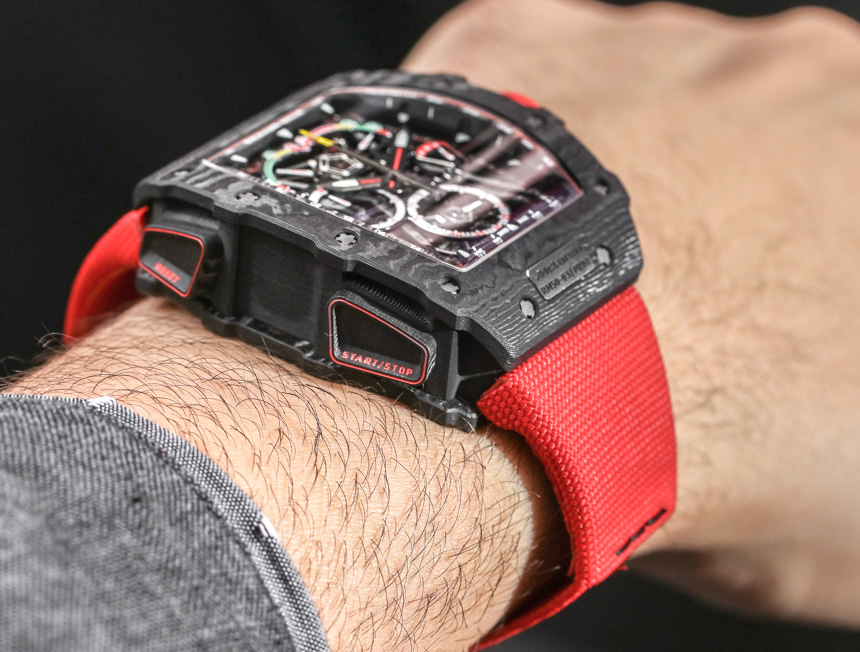
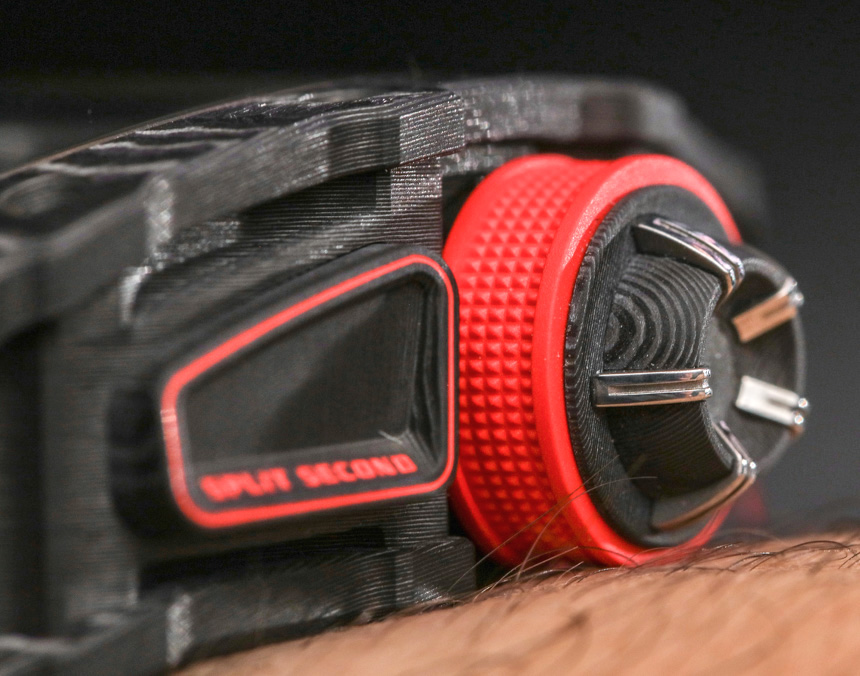
Despite the technological advances found in the case and movement design, many components in the movement itself, like the dial, barrel-drum and minute wheels, exhibit hallmarks of haute horology, like classic hand-finishing techniques that bring an added layer of polish and contrast to the watch’s otherwise menacing exterior. Speaking of that exterior, eagle-eyed F1 fans might pick up on the hollowed-out chronograph pushers, designed to emulate the air intake ducts on the McLaren-Honda car, or how the oversized crown takes its cue from the racing competition wheel rims used by the British team.
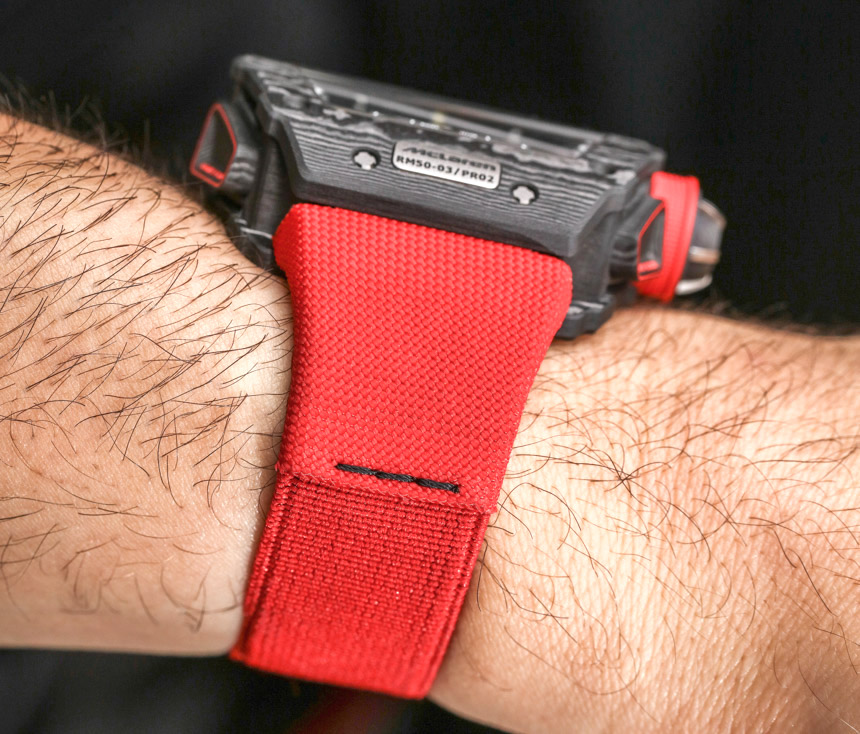

Lastly, it’s definitely worth mentioning that not even the strap options were overlooked during the development process. The Richard Mille RM 50-03 McLaren F1 we saw was on an elastic similar to another elastic band that sees countless wear and tear on a regular basis. Of course, I am referring to elastic bands in underwear. Obviously, the materials used here are more sophisticated, but the general principle remains the same. For a more automotive connection, they look designed to emulate an F1 cockpit seatbelt. However, the standard rubber strap is impressive in its own right. Flush with McLaren’s breakthroughs on graphene applications, Richard Mille gave the rubber strap the same treatment – injecting the nano-material directly into the elastomers, yielding a strap with greater elasticity and wear-resistance.
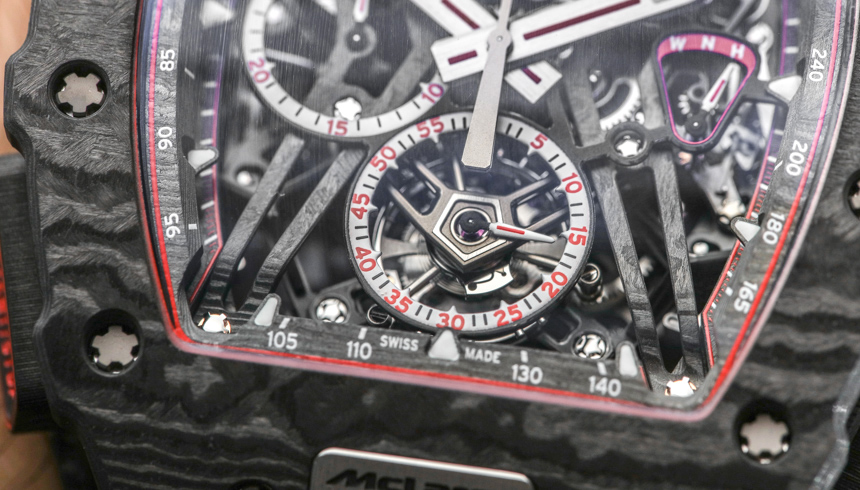
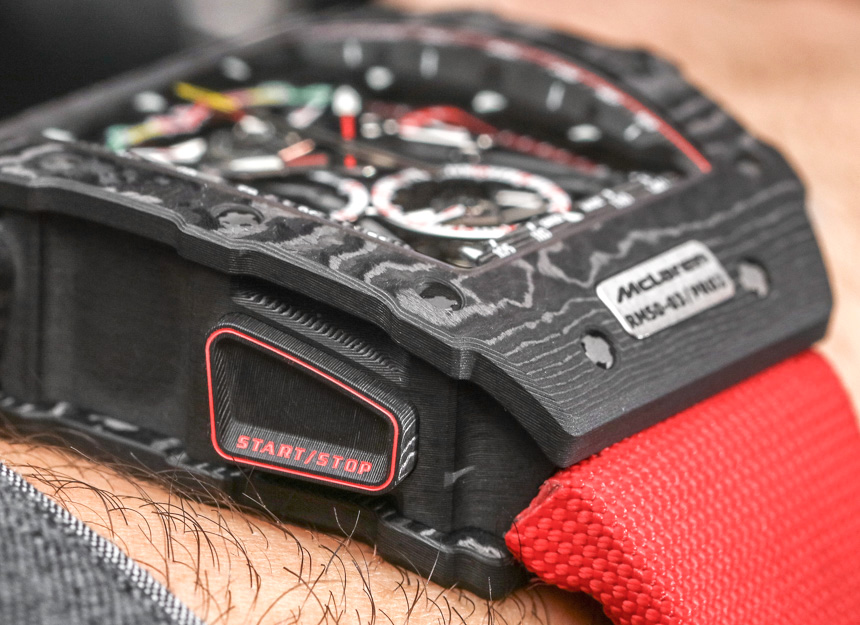
It could probably be argued that the black rubber strap is going to be the more subdued of the two options – granted, we’ve grown familiar with Richard Mille’s 44mm x 49mm case dimensions, but we’d wager the Richard Mille RM 50-03 McLaren F1 wears a touch larger than its 16mm thickness might belie on the softer textile option, likely due to all the color. Love it or hate it, it’s a signature of sorts when it comes to Richard Mille – that amplified wrist presence despite an otherwise ridiculously light weight – like a toy whose ownership puts you amongst the ranks of an ultra-exclusive club, but one that seems gradually less exclusive.
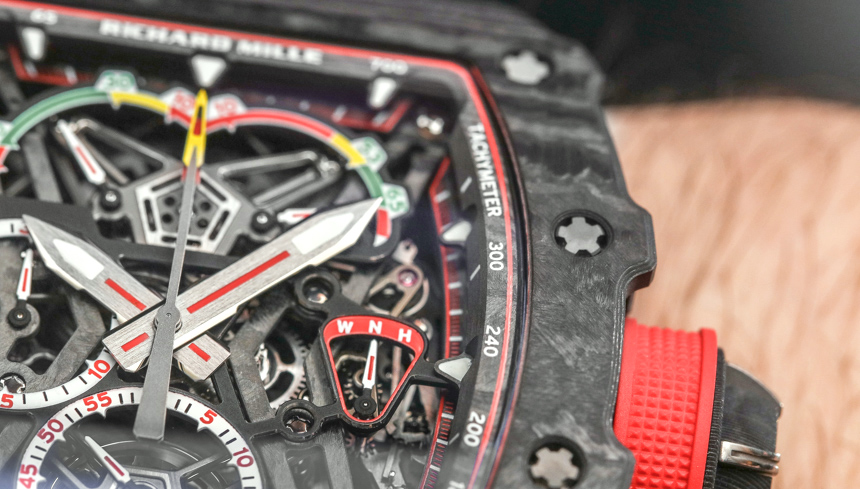
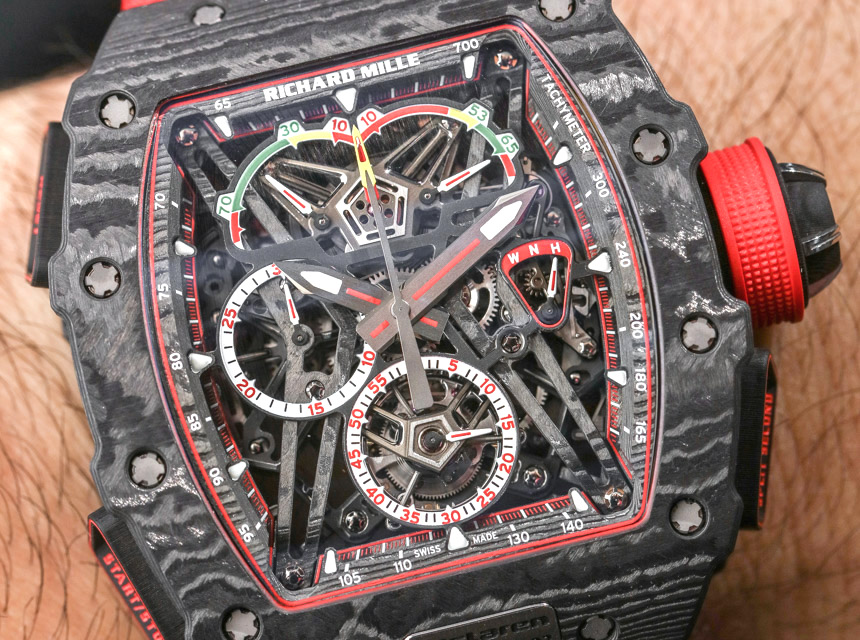
Richard Mille collectors looking to chase one of these bad boys down will have to do so at RM boutiques, where only 75 pieces will be available in total. Owners will also get a 1:5 scale model of the 2017 McLaren-Honda car driven by two-time F1 world champion Fernando Alonso, which is a neat little bow on a package that costs 980,000 CHF before VAT. richardmille.com
